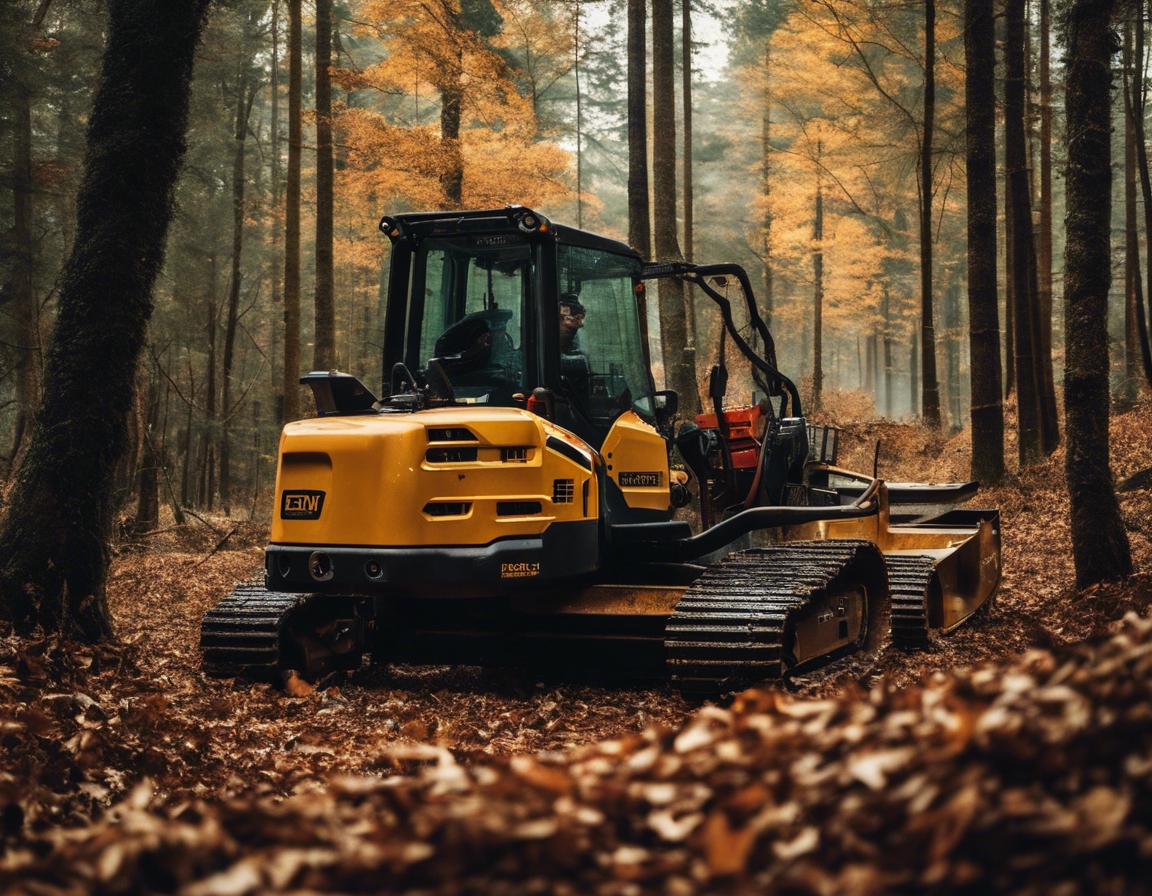The benefits of using forestry machinery in sustainable practices
Sustainable forestry practices are essential for maintaining the health and productivity of forest ecosystems while meeting the needs of present and future generations. These practices focus on balancing ecological, economic, and social factors to ensure that forests continue to provide resources and benefits without compromising their long-term viability. As the demand for wood and forest products increases, sustainable forestry practices become even more critical in mitigating deforestation and promoting biodiversity.
The Role of Forestry Machinery in Sustainability
Forestry machinery plays a pivotal role in enhancing the efficiency and productivity of sustainable forestry operations. By automating labor-intensive tasks, such as tree felling, processing, and transportation, machinery significantly reduces the time and effort required to manage forest resources. This increased efficiency allows forestry workers to focus on sustainable management practices, such as selective logging and reforestation, ultimately contributing to the long-term health of forest ecosystems.
Modern forestry machinery is designed with sustainability in mind, incorporating features that minimize environmental impact. For instance, machinery equipped with low-emission engines and advanced hydraulic systems reduces fuel consumption and greenhouse gas emissions. Additionally, precision technologies enable operators to perform tasks with minimal disturbance to the surrounding environment, preserving soil integrity and protecting wildlife habitats.
Types of Forestry Machinery and Their Benefits
Harvesters are versatile machines used for cutting and processing trees in a single operation. Equipped with advanced cutting heads and computerized systems, harvesters can efficiently handle various tree species and sizes. Their precision and speed not only enhance productivity but also support sustainable practices by enabling selective logging and minimizing damage to surrounding trees.
Forwarders are essential for transporting logs from the forest to a central location for further processing. These machines are designed to navigate challenging terrains with minimal soil compaction, reducing the impact on forest floors. By efficiently transporting logs, forwarders contribute to the sustainability of forestry operations by optimizing resource use and minimizing environmental disturbance.
Skidders are used to drag felled trees or logs to a designated collection area. They are particularly useful in steep or uneven terrains where other machinery may struggle. Skidders equipped with eco-friendly features, such as low-impact tires and winching systems, help reduce soil erosion and protect sensitive forest areas, aligning with sustainable forestry goals.
Mulchers play a crucial role in land clearing and vegetation management by shredding trees and brush into mulch. This process not only clears land for reforestation or agricultural use but also enriches the soil with organic matter, promoting healthy regrowth. Mulchers equipped with advanced technology ensure efficient and environmentally friendly operations, supporting sustainable land management practices.
Innovations in Forestry Machinery for Sustainability
Recent advancements in forestry machinery focus on eco-friendly technologies that reduce environmental impact. Innovations such as hybrid engines, biodegradable hydraulic fluids, and energy-efficient components are becoming standard in modern machinery, aligning with global sustainability goals and reducing the carbon footprint of forestry operations.
Automation and precision technologies are revolutionizing the forestry industry by enhancing the accuracy and efficiency of machinery operations. GPS-guided systems, remote sensing, and data analytics enable operators to make informed decisions, optimize resource use, and minimize waste. These technologies not only improve productivity but also support sustainable forestry practices by ensuring precise and responsible resource management.
Challenges and Considerations in Using Forestry Machinery
While forestry machinery offers numerous benefits, the initial cost and investment can be significant. High-quality machinery requires substantial financial resources, which may pose challenges for smaller operations. However, the long-term benefits of increased efficiency, reduced labor costs, and sustainable practices often outweigh the initial investment, making it a worthwhile consideration for forward-thinking forestry businesses.
Operating forestry machinery requires specialized training and a strong emphasis on safety. Ensuring that operators are well-trained and knowledgeable about the machinery is crucial for preventing accidents and maintaining efficient operations. Investing in comprehensive training programs and adhering to safety standards not only protects workers but also enhances the overall sustainability of forestry practices by promoting responsible and ethical operations.






Comments (0)